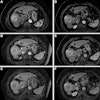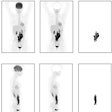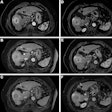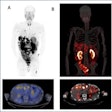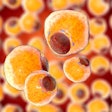
A new x-ray detector prototype could dramatically reduce radiation exposure while also increasing resolution, according to research conducted by a team from Los Alamos National Laboratory and Argonne National Laboratory.
The detector consists of a thin film around the mineral perovskite, and it can be produced at low cost, according to a team led by Hsinhan Tsai, PhD, of Los Alamos. It is 100 times more sensitive than silicon‑based detectors and does not require an outside power source to produce electrical responses to x-ray, the group said. Perovskite contains lead and iodine and is thus able to capture x-rays that silicon does not, particularly high-energy x-rays, according to the team.
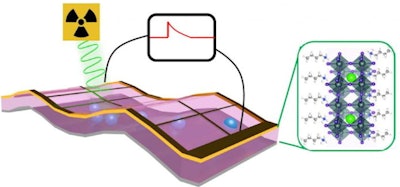 X-ray detectors made with 2D perovskite thin films convert x-ray photons to electrical signals without requiring an outside power source, and are a hundred times more sensitive than conventional detectors. Image courtesy of Los Alamos National Laboratory.
X-ray detectors made with 2D perovskite thin films convert x-ray photons to electrical signals without requiring an outside power source, and are a hundred times more sensitive than conventional detectors. Image courtesy of Los Alamos National Laboratory.Perovskite films could be "deposited on surfaces by spraying solutions that cure and leave thin layers of the material behind" -- making thin-layer detectors much less costly to produce than silicon-based ones, Tsai and colleagues wrote.
"Potentially, we could use ink-jet types of systems to print large-scale detectors," he said in a statement released by the laboratory. "This would allow us to replace half-million-dollar silicon detector arrays with inexpensive, higher-resolution perovskite alternatives."


